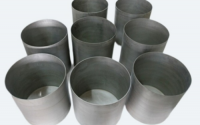6 Common Uses of Tungsten Wire
Introduction
Tungsten wire finds its way into a wide range of industries due to its high melting point, durability, and ability to withstand extreme temperatures. In this article, we will explore six common uses of tungsten wire, showcasing its significance in modern technology and industries.

1. Lighting Applications
One of the most well-known uses of tungsten wire is in lighting, specifically in incandescent light bulbs.
Tungsten wire is used as the filament in these bulbs because it has the highest melting point of any metal (over 3,400°C or 6,200°F). When electricity passes through the tungsten filament, it heats up and glows, producing light. The high melting point ensures that the filament can endure the extreme temperatures required to produce visible light without melting or breaking down.
Although incandescent bulbs are being phased out in favor of more energy-efficient lighting technologies, tungsten wire is still used in specialty lighting, including halogen lamps and high-intensity discharge (HID) lamps. These lamps are often found in automotive headlights, projectors, and high-powered industrial lighting.
Related reading: What Are the Main Uses of Tungsten Wire?
2. Electronic Devices
Tungsten wire plays a crucial role in the electronics industry.
It is commonly used in the production of vacuum tubes, which were once a backbone of early electronics such as radios, televisions, and amplifiers. Even though solid-state devices have largely replaced vacuum tubes, they are still used in some high-power radio transmitters and specialized audio equipment. Tungsten wire’s resistance to heat and corrosion makes it ideal for the high-stress environment inside vacuum tubes.
Additionally, tungsten wire is used in electronic contacts and circuit boards, where its conductivity and durability help maintain reliable electrical connections. It’s also employed in the manufacturing of cathodes for electron beam welding, X-ray tubes, and certain other high-energy applications.
3. Medical Devices
In the medical field, tungsten wire is used in a variety of applications, particularly in imaging and diagnostic equipment. For example, it is used in the filaments of X-ray tubes, where it helps generate the high-energy X-rays needed for imaging. Its ability to withstand intense heat is critical in this application since X-ray tubes must generate significant heat without failing.
Tungsten wire is also used in electrodes for radiation therapy devices, where precision and durability are essential. In addition to these high-tech applications, tungsten wire is sometimes employed in fine surgical tools and instruments because of its strength and malleability.
4. Aerospace and Defense Applications
Tungsten wire is a critical material in the aerospace and defense sectors due to its high strength, heat resistance, and density.
One of its primary uses is in the production of composite materials that are used in spacecraft, missiles, and military aircraft. These composites, often known as tungsten composites, can handle the extreme conditions found in space travel and high-altitude flights, including high temperatures, intense radiation, and mechanical stress.
Tungsten wire also finds applications in the manufacturing of heating elements for spacecraft, as well as in electrical components where heat and corrosion resistance are paramount. Its high melting point allows it to endure the rigorous conditions in aerospace applications without losing structural integrity.
5. High-Temperature Furnaces and Heating Elements
Due to its ability to withstand extreme heat, tungsten wire is often used in the production of heating elements for high-temperature furnaces. These furnaces are commonly used in industries that require precise heat control and extreme temperatures, such as metal processing, ceramics, and glass manufacturing.
In these furnaces, tungsten wire heating elements are essential because they maintain their structural integrity even when exposed to temperatures well over 3,000°C (5,400°F). This makes them ideal for sintering processes, where materials are heated to just below their melting points to form solid components.
6. Thermionic Emitters and Electron Guns
Tungsten wire is used in thermionic emitters, which are critical components in devices that rely on electron emission, such as electron microscopes, cathode ray tubes (CRTs), and certain types of welding equipment. Tungsten’s properties allow it to emit electrons when heated to high temperatures, making it ideal for these types of applications.
Electron guns that use tungsten wire are found in various research instruments, including scanning electron microscopes (SEMs) and transmission electron microscopes (TEMs). These instruments require a stable source of electrons to produce high-resolution images, and tungsten wire ensures consistent and reliable performance.
Conclusion
Tungsten wire is a critical material in many industries due to its high melting point, durability, and resistance to heat and corrosion. Its applications range from everyday lighting to highly specialized fields such as aerospace, medical imaging, and scientific research. Whether it’s creating the light in a halogen bulb, enabling advanced medical diagnostics, or withstanding the extreme conditions of space, tungsten wire plays a vital role in powering technology and innovation across the globe. For more information, please check Advanced Refractory Metals (ARM).



